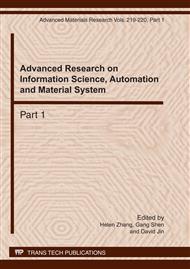p.732
p.736
p.742
p.746
p.750
p.754
p.762
p.766
p.770
The Research and Implementation of Electrostatic Detonating Gas Simulation Experiment System Controller Based on Nios II
Abstract:
The electrostatic discharge detonating gas simulation experiment system based on Nios II is developed in this paper.This system uses flexible and highly efficient SOPC technology,which embeds many functional modules.The system can simulate the mine gas environment, measure the oxygen, temperature and the gas concentration that most likely detonating gas, and real-time display in the LED screen, so as to obtain important data of gas explosion in coal environmental, which provide theoretical and experimental basis for farmulating standards of electrostatic security of human body and the safety of production in coal mine. It can conduct a series of experiments about electrostatic discharge of human body detonating gas mixture.
Info:
Periodical:
Pages:
750-753
Citation:
Online since:
March 2011
Authors:
Keywords:
Price:
Сopyright:
© 2011 Trans Tech Publications Ltd. All Rights Reserved
Share:
Citation:


